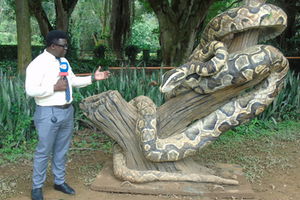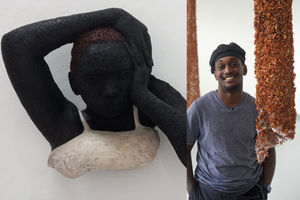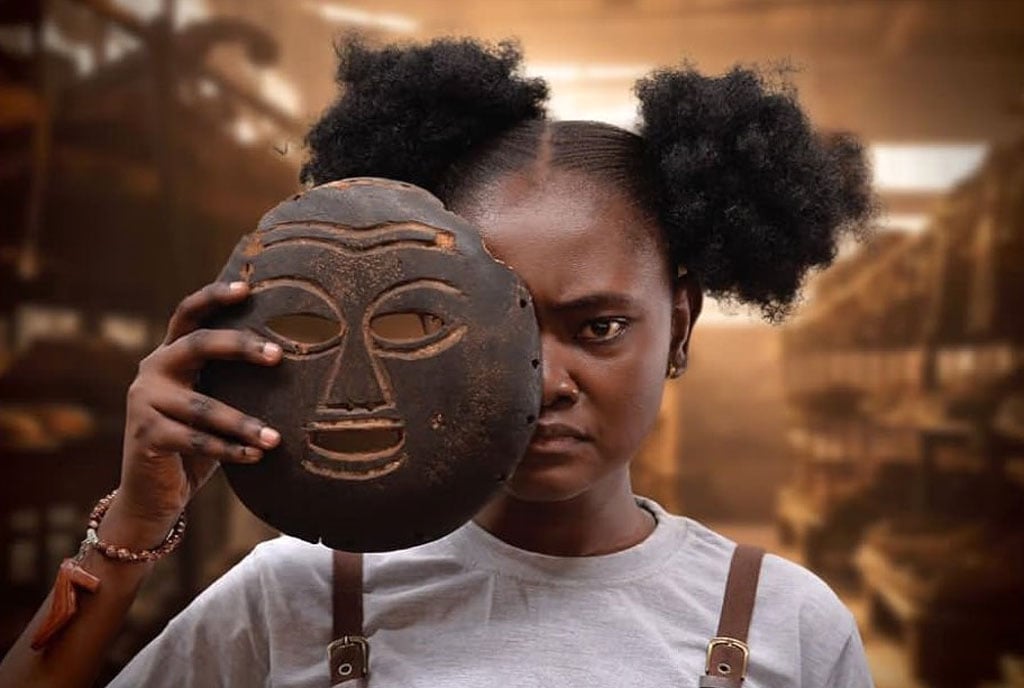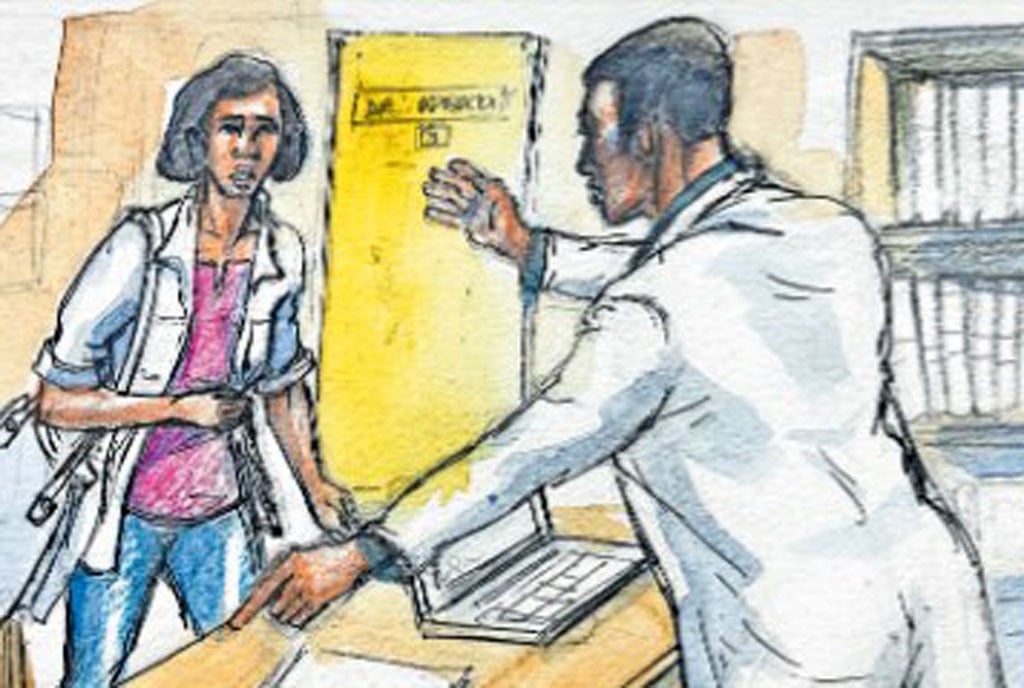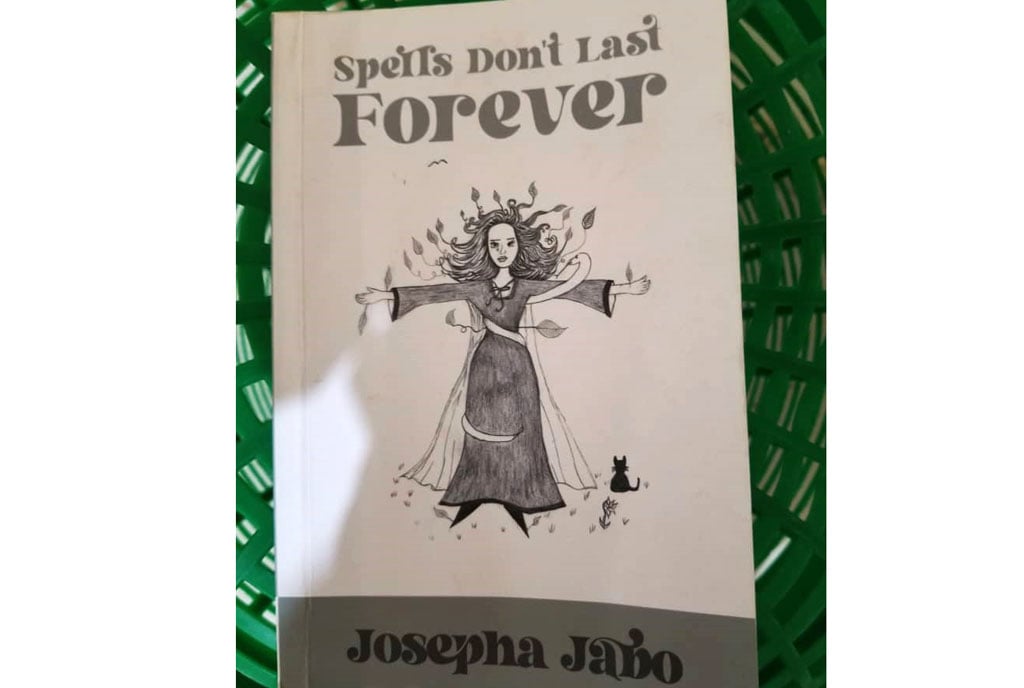
Dr Lilian Nabulime’s sculptures made out of brooms PHOTO/courtesy
Lillian Mary Nabulime, Tony Odur, Donald Wasswa, and Xenson are remarkable artists in their own right. Nabulime and Wasswa are celebrated sculptors, while Odur and Xenson have gone through the drill as painters, sculptors, and other experimental forms of expression.
At Afriart Gallery, the four artists showcased works from different videos of works they have worked on differently, but one thing all the works have in common is that they are all from bigger bodies of works from the respective artists.
This is one of the few group exhibitions that Afriart Gallery has organised in such a long time, and with the kind of artists exhibiting, it is clear that it is not an ordinary group exhibition; in fact, even the opening was highly anticipated.
The opening of the exhibition brought together both visual artists and different stakeholders that appreciate the craft. The gallery was filled by 5pm, and most people were struggling to even have a glimpse of the works.
Odur and Xenson presented multi-disciplinary works. For instance, for his Waagawulidde installation, Odur puts together a showcase of media, combining metal and multimedia pieces to get out the message he intends to put across.
His metallic TV boxes are showing speeches, many of which were made when Uganda got its independence in 1962, but that is just the face value of his installation.
A bigger issue the installation tackles is freedom of expression and speech, from his ongoing series, The Art of Offence, which includes notable installations such as Ebyakaisaali (2020) and Muwawa (2021).
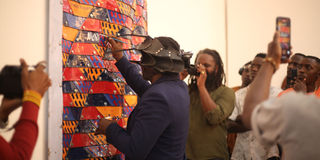
Xenson during a performance with his installation. PHOTO/Andrew Kaggwa
Waagawulidde, according to the artist, comes from personal experiences with the confiscation of some of the artist’s artworks and from personal observations in Uganda, where the press, particularly television, is predominantly used as a propaganda tool.
The national television stations tend to broadcast content that glorifies the state, neglecting a broader, more informed perspective on news and current events. This biased dissemination of information significantly impacts public perception and stifles creative expression.
The installation is also a collaboration between Odur and poet Sebo Lule, which was timely considering the exhibition opened the same week youth in Uganda took to the streets to demonstrate against rampant corruption. The performance talked about biased communication, which intends to side with the oppressor.
Xenson also recited a poem alongside his work, Kiri Mukikapu, which is inspired by a Luganda saying, Kiri muttu kimanyibwa nyini kyo, which means ‘What is in a parcel is known by the owner’ and Kiri Uganda, a saying people use in bewilderment.
His work on display is part of his collection from the Olidde mu Pipa exhibition that was held in Nairobi early this year. The artworks on display are both made out of old packaging materials such as containers and barrels; for this specific work, a metallic basket and mat, his poem Ntandike Ntya talks about humanity and taking care of each other like the ancestors lived.
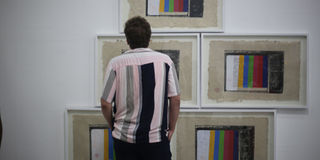
An extension of Odur’s installation Wagawulidde which is a commentary on the freedom of speech and expression.PHOTO/Andrew Kaggwa
The larger body of work appears to talk about Africa getting a raw deal from all the industrialisation the continent has gone through, many of which has left Africans frustrated and packing their bags to find greener pastures else where.
In the showcase, the basket had a human figure trapped inside, probably a sign that packing the bags for greener pastures does not always translate into success, but at times traps people into the same circle of suffering they were running away from.
Donald Wasswa showcased a few art works from his 2017 collection, To Live is To Become, but some of the works on display are from his newer collection, where he’s testing a new technique of curving wood with an inspiration of geometrical shapes.
Dr Lilian Nabulime went for simplicity, working with a tool everyone has interacted with at home, a broom. She transforms the heads of handmade brooms into sculptures, giving them functionality and individuality in the process.
Aptly titled Lives of Brooms, it is also part of an ongoing series that allows the viewer to have an emotional connection with the work, even when it was initially dismissed as a broom.
The exhibition is the first by Odur and Xenson since their showcase at the Venice Biennale early this year and the first for Dr Nabulime since her Olugambo solo show at the end of 2023. The exhibition is going on until September 7 at Afriart Gallery on Seventh Street in the Industrial Area.
